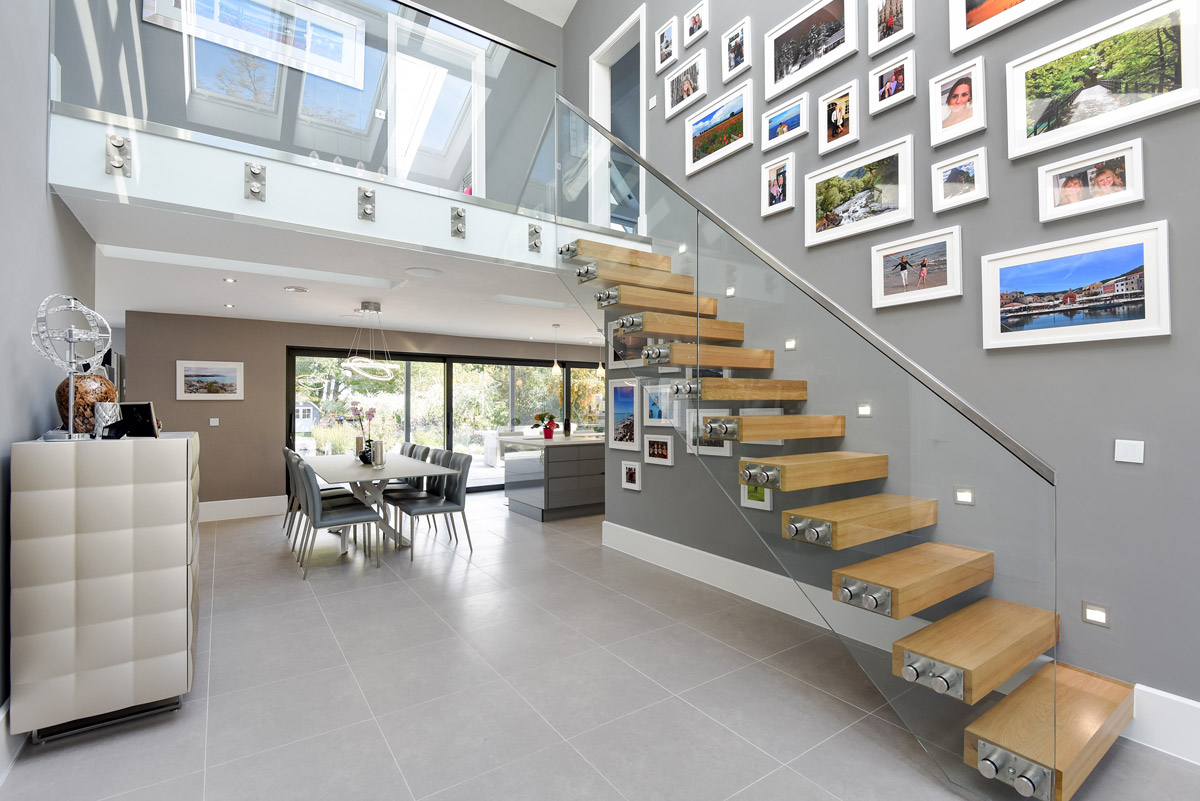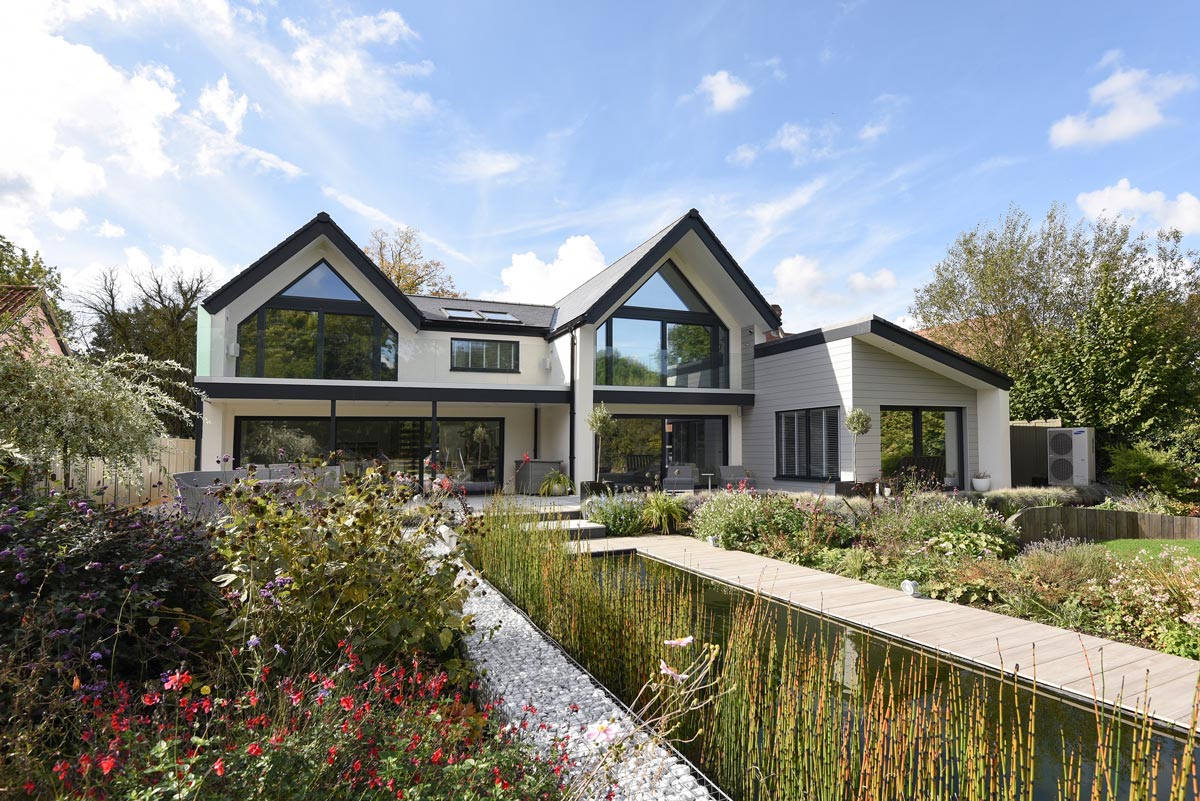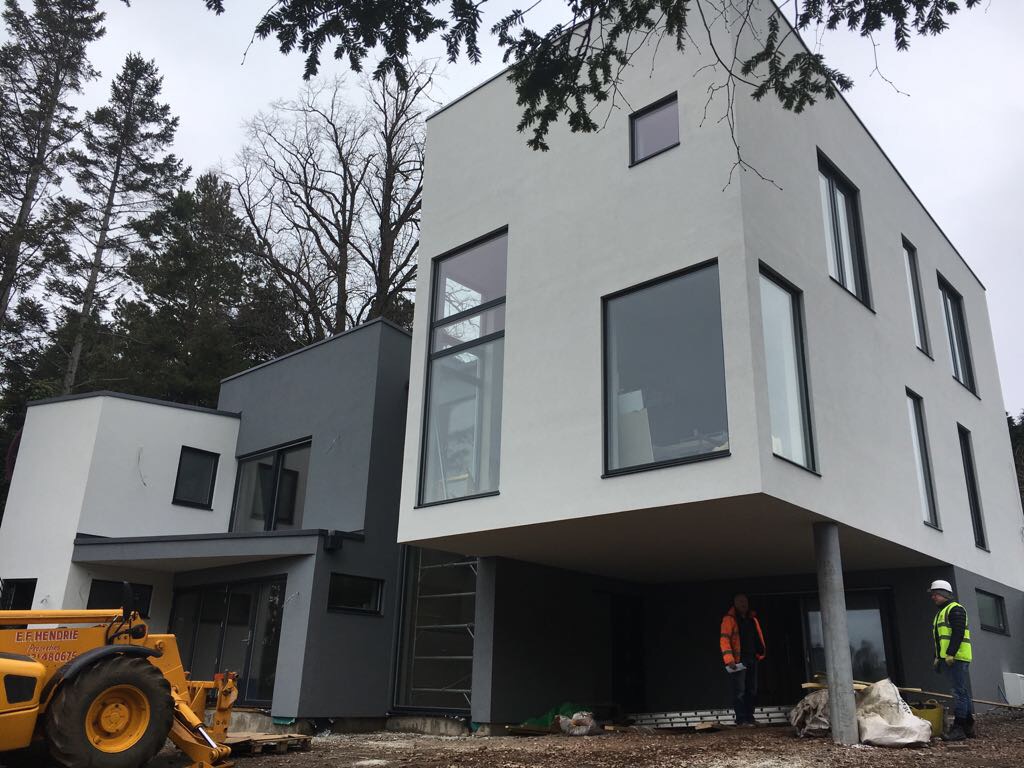AC Architects work with BuildStore Mortgage Services, the UK’s leading Self Build mortgage experts. With 20 years experience and over 20,000 homes build, their specialist mortgage advisers will recommend and tailor a borrowing solution to suit you and your new home.
BuildStore have access to a range of borrowing solutions including exclusive mortgages suited to self builders, offering competitive rates and a choice of stage payments.
We put our questions to Rachel Pyne, Operations Director at BuildStore, to give you an expert’s perspective on how to fund a Self Build.

WHEN IS THE RIGHT TIME TO THINK ABOUT FUNDING MY SELF BUILD?
When it comes to funding your homebuilding plans, it is important to fully understand your borrowing options and know your budget early on. It is particularly important to know this before you engage with designers, architects or project management teams, as you need to know that your plans are affordable and mortgageable.
Think of it this way, if you are buying an existing property, you need to know how much you can borrow before you start looking. It is no different when it comes to self building, it is actually even more important!
SHOULD I USE A MORTGAGE ADVISER TO ARRANGE MY FINANCE?
The short answer is yes. When it comes to funding your Self Build, there are many factors and borrowing options to consider. It pays to speak to an expert mortgage adviser like BuildStore, who can look at your financial circumstances and project requirements, to recommend and tailor a borrowing solution to suit you and your new home.
HOW DOES A SELF BUILD MORTGAGE WORK?
As your Self Build home will be paid for in stages, rather than borrowing funds using a traditional mortgage, a specialist borrowing option is more suitable.
A stage payment mortgage is designed to fund a range of homebuilding plans. It differs from a traditional mortgage in that the funds are released in stages, rather than as a single amount.
Typical Self Build stages are:
- Foundations
- Wall plate/frame erected
- Wind & watertight
- First fix & plastering
- Second fix & completion
With BuildStore, the stage payments from your mortgage will be tailored to suit your specific payment schedule, as it is not just about how much you can borrow, but when that money is available to you throughout the build.

IS THERE MORE THAN ONE TYPE OF SELF BUILD MORTGAGE?
There are two types of Self Build mortgage. They are defined by how funds are released during the build, where your stage payments are either subject to an increase in the value of works completed or guaranteed based on your costs.
The valuation based stage payment mortgage releases funds after each stage of works are complete, where a valuation has taken place showing an uplift in value.
The cost-based stage payment mortgage provides guaranteed payments based on your build costs either before or after each build stage, depending on your build payment schedule – even when there has been no uplift in the value of works completed.
With the valuation based stage payments, the stage releases from your mortgage are reliant on an increase in value of your build as each stage is complete. This can be a problem particularly in the early stages of your build, for example, the foundations, where often the increase in value is not as much as they have actually cost to complete.
Lenders offering valuation based stage payments will require a retention, which means they will hold back between 5-10% of your total loan amount until your build is complete. So on the average Self Build loan amount of £250,000, there will likely be a retention of between £12,500 and £25,000. This can be tricky as you reach the latter stages of your build and have subcontractors on-site like electricians, joiners and plumbers who generally work on a labour only basis. This needs some careful planning to ensure that you can pay for your materials and labour in your final fit-out stage prior to the final stage release being made by your lender.
If you have sufficient savings or already own your plot and can remortgage it to provide the funds to start the build, then valuation based stage payments could still work for you.
Cost Based Stage Payments
The cost based stage payment mortgage provides guaranteed stage payments based on your costs, as opposed to the value the works add to the build. This gives you certainty in your budget and peace of mind knowing you can plan for and pay your bills on time.
With this option, funds are available either before or after each build stage, depending on your build payment schedule. For example, if you have chosen an off-site manufactured building system like a timber frame, SIPs or ICF where you may be required to pay for your system in full before it even leaves the factory, a cost based mortgage with funds before each build stage means you will have the cash to meet your supplier’s payment terms. What is more, as a cash buyer you can take advantage of the best deals and time restricted offers on materials.
Positive cashflow is the lifeblood of any homebuilding project and a cost based mortgage ensures you have the cash you need, when you need it, to pay your tradespeople and suppliers – whether that’s daily, weekly or monthly.
Valuation or cost based stage payments? The type of stage payment mortgage best suited to you will depend entirely on your individual circumstances, project and cashflow requirements.
It pays to speak to an expert mortgage adviser who can assess your situation to determine which type is right for you because having the wrong funding in place could be the difference between an unfinished build and a completed home!
When buying a property using a traditional mortgage, your priorities will be a low interest rate, minimal fees and the total loan amount. With a Self Build your priority should be your cashflow and ensuring sufficient cash is available to complete each stage of your build.
The stage releases from your mortgage should reflect your costs and payment terms of your tradespeople and suppliers. Remember your payments may need to be paid monthly, weekly or even daily so it is important you have the funds you need available when you need them to pay your bills.
With a valuation based mortgage, there is an element of risk, though with a cost based mortgage your stage payments are guaranteed and based on cost which offers certainty.
At BuildStore, we will assess your circumstances to determine which mortgage is right for you.

HOW DO I WORK OUT MY BUDGET?
To work out your budget, you must calculate how much money you already have and how much you can borrow. Your contribution to the build must be accessible cash, so if the money you wish to use is tied up in property, this must be released.
How much you can borrow depends on your financial circumstances and how much you can afford. Just like with any mortgage, lenders will look at your income and outgoings to calculate how much they are willing to lend you.
A standard Self Build mortgage will typically enable you to borrow up to 75% of your project costs, while others mortgages available through BuildStore offer increased borrowing of up to 85%, and in some cases 95% of your costs. If you already own your plot, it may be possible to borrow enough to fund your build costs in full.
I’VE HEARD THAT THE CONSTRUCTION METHOD WE CHOOSE MAY IMPACT OUR ABILITY TO GET A MORTGAGE. IS THIS CORRECT?
The construction method you choose for your new home won’t necessarily affect your ability to obtain a self build mortgage, but it can limit your borrowing options.
Self Build mortgage lenders are complex in nature, with each lender having its own conditions when it comes to the design, build system and materials used for your new home.
Typically most traditional and modern building systems are acceptable to the majority of lenders. Criteria tends to be more restrictive when it comes to the material used for the outer skin of the build, as this is what protects your home from the elements and is key to its visual appeal.
Your mortgage lenders main concern is that your new home provides them with suitable security and is capable of being re-sold and maintaining or increasing in valuation over the term of the mortgage. So when it comes to the outer skin, lenders tend to insist on standard materials that are durable, have a long life expectancy, and are visually appealing.
With timber cladding for example, some lenders will not lend on this due to its limited life expectancy of 20 to 30 years, though there are lenders who have no issue with this, and others who will restrict the amount of timber used to a maximum of 25-50% of the overall cladding.
Before deciding on your build system with your architect, it’s important to get specialist advice early on to ensure it’s acceptable for mortgage purposes.

WHAT DO YOU NEED TO HAVE PREPARED BEFORE YOU APPLY FOR A SELF BUILD MORTGAGE?
When it comes down to actually applying for your mortgage, you’ll need to provide the information and documentation requested by your chosen lender.
It’s important that your credit report is in good condition, and the income and outgoings shown on your bank statements are healthy, with no signs of overspending.
The personal and financial information required is typical of that of a traditional mortgage, for example, a form of ID, proof of address, bank statements and income documents. In addition to this, the lender will need a copy of the plans for your new home, planning permission and build cost breakdown.
FYI –If you’re unsure of how to break down your build costs into the key stages of the build, BuildStore’s £100 Costing Service can help.
WHAT IS A RETENTION AND WHEN WILL LENDERS IMPOSE THIS AS A CONDITION OF THE LOAN?
A retention is where a mortgage lender holds back some of your mortgage funds until your new home is complete.
Self Build lenders offering valuation based stage payment mortgages will usually require a retention to be in place. It’s likely that they will hold back between 5% – 10% of your total loan amount until your build is complete. So on the average Self Build loan amount of £250,000, there will likely be a retention between £12,500 and £25,000.
A retention doesn’t normally apply to cost based stage payment mortgages, and with a valuation based mortgage the funds (except for the plot purchase) are released at the end of each build stage anyway, so the retention is really just following this pattern as your last stage payment.
This depends on how you fund your build and how much cash you have in savings. If you choose a valuation based stage payment mortgage, you’ll need a minimum deposit of 15% of the plot price, as well as money to pay for the early stages of the build. If you don’t have sufficient savings, you may decide to sell your current house to release the equity before starting your new project.
If you don’t want to sell your current house and move into temporary accommodation before your new build is complete, the BuildStore cost based mortgage may be right for you. The higher lending percentages and advance stage payments during your build will ensure that cashflow is not an issue, so you can continue living in your current house until you’re ready to move.

GENERALLY WHAT COSTS ARE INVOLVED WHEN SELF BUILDING?
Your build costs will depend on a number of different factors, for example, the size of your new home, location, design, construction type and internal specification. When calculating your costs, you must consider the fees involved and deduct these from your overall budget.
Typical fees
- Legal fees
- Mortgage fees
- Planning application fees
- Architectural fees
- Surveying fees
- Building regulation fees
- Interim inspection fees
Fees can range from £10,000 to £20,000 in total. A contingency of around 10-20% of your build cost budget is recommended to cover any unexpected costs.
ARE THERE OTHER BORROWING OPTIONS AVAILABLE OR DO I NEED A SELF BUILD MORTGAGE?
A Self Build project doesn’t always equal a Self Build mortgage. There are other borrowing options available which might be more suited to you, and choosing the right one can ensure that the journey to your new home is as smooth as possible.
If you have enough equity in your current home or own it outright, you could remortgage or secure a bridging loan to pay for the plot, fund your build costs or both. Then when your new home is finished, you can sell your old one to pay off the loan. This way you can stay in your current home during the build and avoid the upheaval of moving, living onsite or renting during the build.
We recommend you speak to an expert mortgage adviser who can recommend the right borrowing solution to suit your needs and circumstances.
More articles discussing financing your Self Build below:




